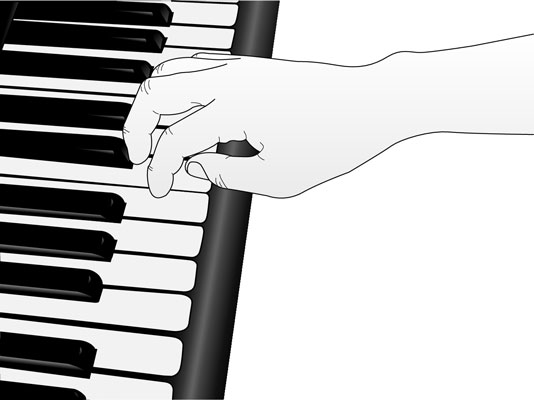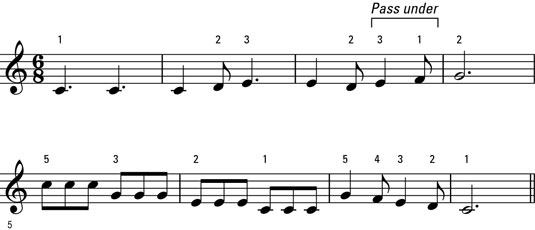Piano music is often very fluid, requiring you to shift hand positions. The best way to do this is to use a little maneuver called finger crossing. Finger crossing is one of those techniques that can be awkward at first, but it has a whopping payoff once you get the hang of it.
Don’t try to make your hand, wrist, fingers, or arm do something impossible. When you cross over or pass under, let your hand and arm follow your fingers with easy, fluid movements. Try to keep your forearm and hand more-or-less perpendicular to the keyboard without any excess twisting.
Crossing over your thumb
Why cross over fingers when you can just move your hand? In C position, the thumb can sometimes extend to play B, but not always. For example, you may need to play B followed immediately by middle C. If you extend and contract your thumb back and forth between these two keys, it sounds clunky. Instead, you cross the index finger of your right hand over your thumb to play B.
You can watch your hand on the keys when you cross over or under, but with practice you should easily feel where the keys are without looking. Whether you look or not, it’s important to keep a relaxed arch in the hand and avoid twisting your hand as you cross a finger over your thumb.

Passing your thumb under
You can pass your thumb under RH 2 to move to a new position. The song “Row, Row, Row Your Boat” gives you a chance to try out this little switch-o-rama between positions:

You start with your right hand in C position, but in measure 3 you pass your thumb under RH 3 to play F, and then you play the G at the beginning of measure 5 with RH 2. You’ve shifted your hand position with a pass under! You then continue with your hand in this new position. Your hand position will naturally shift downward from the high C in measure 5 as you follow the tune back to C position by measure 6, where you stay to finish the song.

